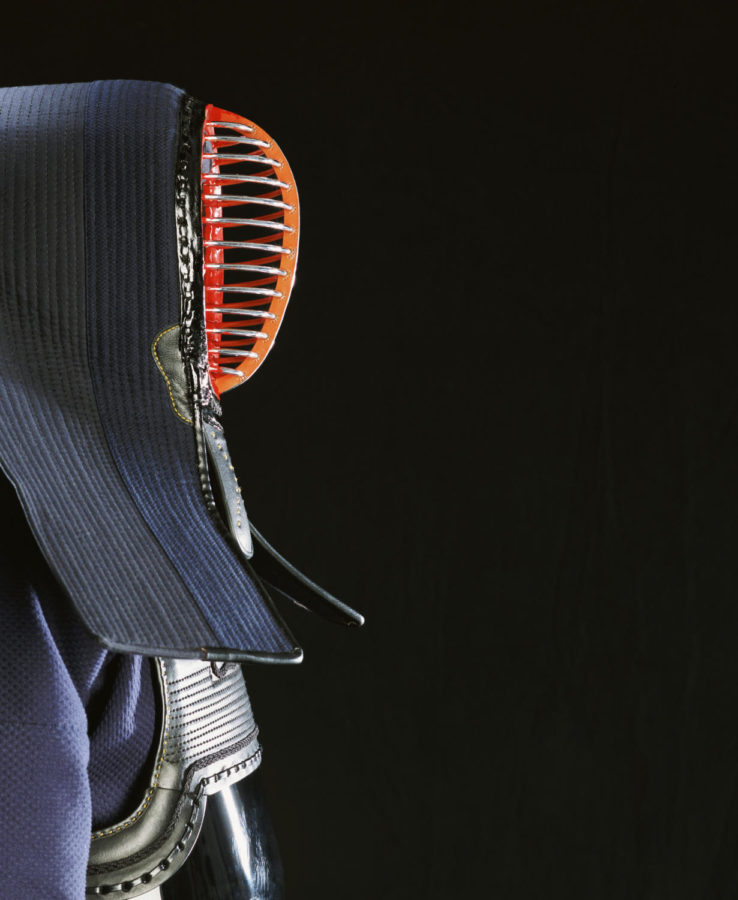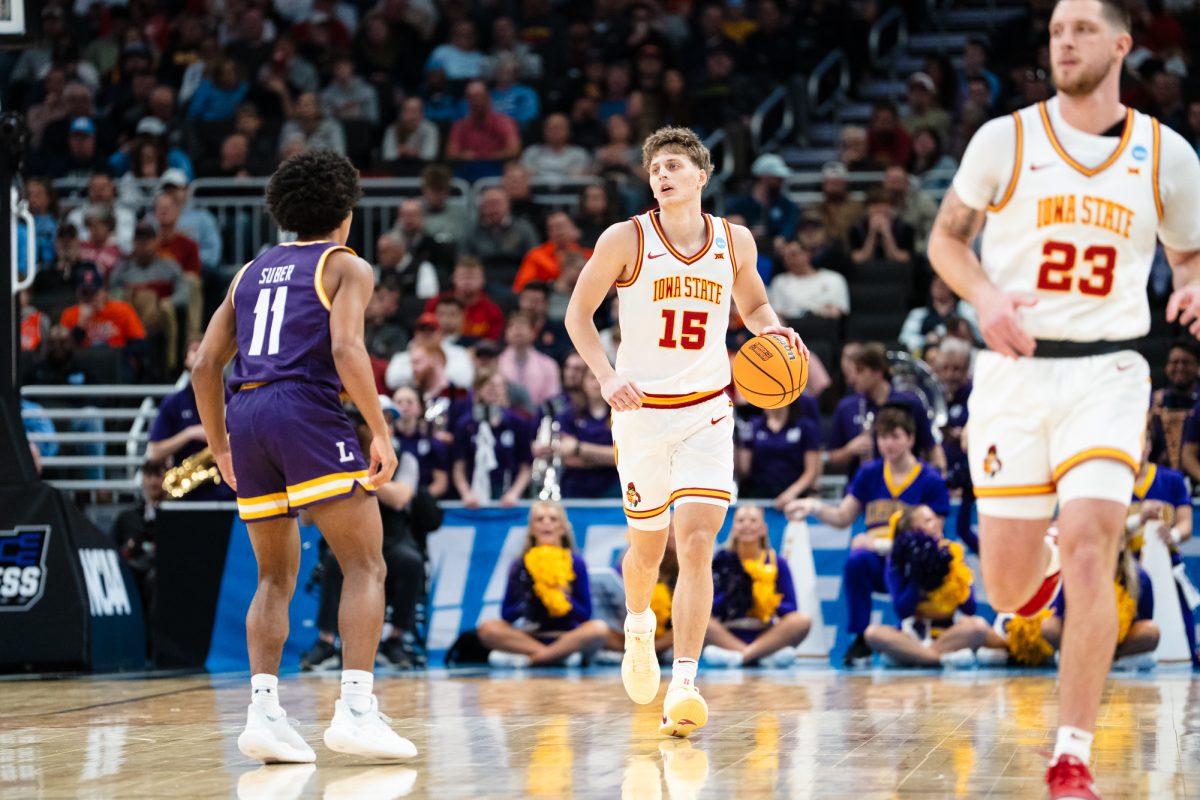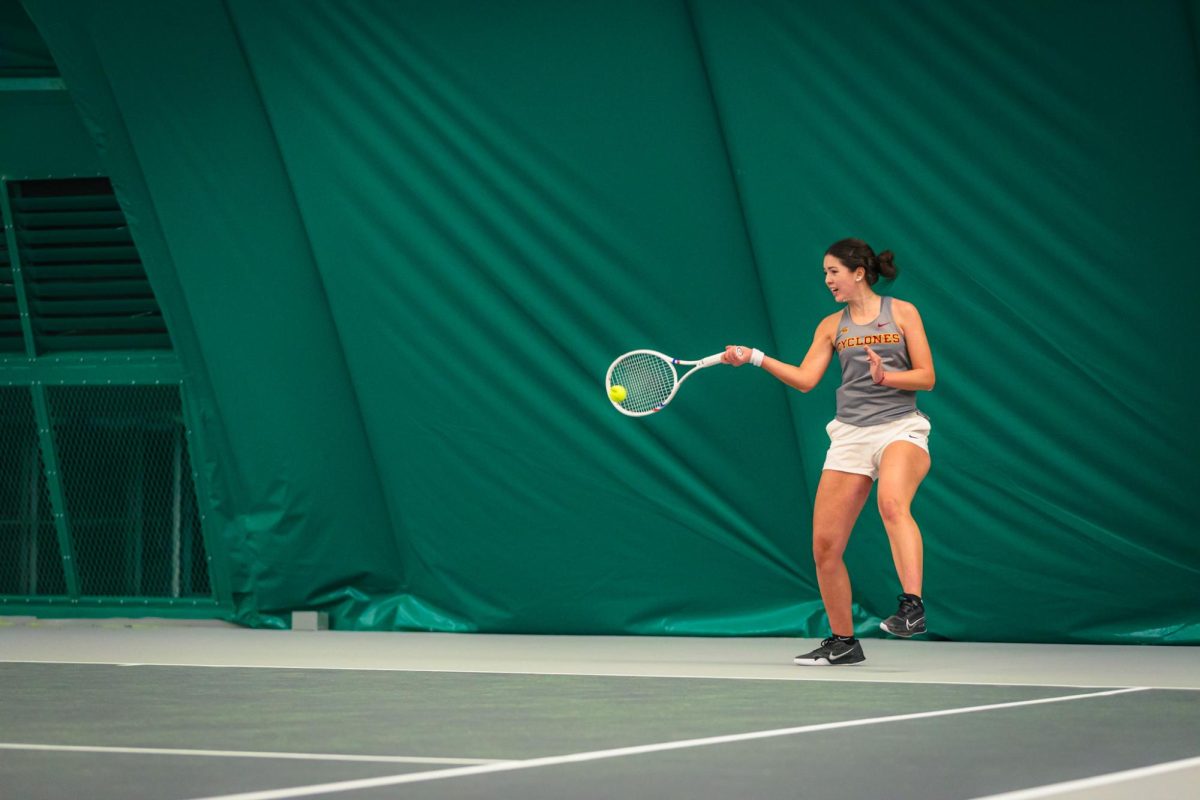Kendo Club gains popularity
Equipment used in Kendo, a modern form of Japanese sword fighting based on samurai martial arts.
April 25, 2011
Beyer Hall is mainly known for hosting a variety of sports like basketball, volleyball and badminton. There are some students, however, who take a more ancient approach to staying active.
Sam Young and Brian Aouo are part of Iowa State’s Kendo Club.
The club was originally started by Young Joo, an associate professor in agriculture and a Kendo instructor in Korea, in 1996.
His son Daniel Joo taught the club in his father’s absence.
“He wanted to spread the sport over here and get it some credibility in the United States,” Daniel Joo said.
Daniel Joo is a fifth-year architecture student and has given Young the reins so he can focus on graduating. Young is the club’s president and Aouo has been practicing Kendo for two years, making him one of the more experienced members.
“The martial art really improves people’s concentration,” Aouo said. “Concentration is really critical in this martial art. Also, it’s a way for people to socialize and develop a common interest.”
According to Young, the visual appeal of the sport has something to do with its growing popularity. Popular culture also plays a part.
“You get to look pretty cool,” Young said. “I think there is a lot of the cool factor in pop media with all the samurai movies and martial arts movies coming out. Those reasons are good for starting out, but once you get into it, you want to keep getting better and not embarrass yourself.”
Kendo, which translates to “the way of the sword,” originated in Japan between 1185 and 1333. It tests both the body and the mind.
According to the All Japan Kendo Federation, its aim is to “discipline the human character through the principles of katana, meaning ‘samurai sword.'”
Practitioners of the sport, called kendoka, also believe that Kendo will mold the mind and body.
In addition, it will also cultivate a vigorous spirit and pursue the cultivation of one’s self.
While samurai warriors originally used swords to fight to the death, the ISU Kendo Club takes a safer approach. It uses sticks made out of bamboo that have rounded, rubber edges, called shinais.
In competitions, the first person to gain two points wins the spar. The ways in which players can get points are by striking the head, wrist or the lower ribcage.
“The most basic move that you have to learn is the head strike,” Young said. “This is the attack from which all other attacks are derived from.”
Kendo is a martial art that focuses almost completely on attacking instead of a balance of offensive and defensive moves.
“You can’t really defend because if you try to defend one area, then the other two areas are open for attack by your opponent,” Aouo said.
The more modern practices of Kendo have a higher noise level than other martial arts. Kendoka are required to yell out the area they are planning on attacking for the point to count. They are also required to stomp their front foot when attacking.
The foot stomp is useful because of the belief that the attackers arms aren’t strong enough on their own to strike a successful blow. The attacker’s front foot must hit the ground at the same time the stick strikes the opponent.
“You have to be very coordinated to be able to do this skill well,” Young said.”Some people are able to learn it very quickly, while it takes others their whole lives. People who practice Kendo in parts of Asia usually start at age 6, which gives them time to develop their skills.”
Another difference between Kendo, or Kumdo as it’s sometimes called, and other martial arts is the style of fighting.
“Hapkido and karate and other martial arts like that are all hand-to-hand, combat-based, whereas kendo is weapon-based,” Young said.
Kendo is one of only three known martial arts that are weapon-based.
Current estimates put the number of Kendoka at approximately 4 million on Japan and 1 million in Korea. Kendo is also growing in North and South America, as well as other Asian countries.







